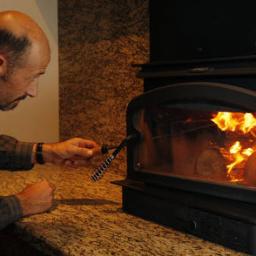Wood-burning homes targeted as major air polluters
 Fireplaces may no longer invoke the same kind of warm memories they used-to. While a fire in the hearth may look good, it's bad for the heart and lungs. It's also becoming illegal. An onslaught of new research linking fireplace smoke with heart attacks and lung disease, coupled with stricter air regulations, daily bans on wood-burning, and higher insurance rates may soon erase that Norman Rockwell fireplace scene from real estate brochures. Air districts in California, Washington, Oregon, Colorado and in China and Greece are asking the public not to burn wood. Utah even proposed a near-complete ban on wood burning, but retracted the measure after overwhelming public opposition. While a low-tech solution, it is an inexpensive way to cut emissions. "We've spent 50 years trying to control air emissions from every source, but this one has gone unregulated."
Fireplaces may no longer invoke the same kind of warm memories they used-to. While a fire in the hearth may look good, it's bad for the heart and lungs. It's also becoming illegal. An onslaught of new research linking fireplace smoke with heart attacks and lung disease, coupled with stricter air regulations, daily bans on wood-burning, and higher insurance rates may soon erase that Norman Rockwell fireplace scene from real estate brochures. Air districts in California, Washington, Oregon, Colorado and in China and Greece are asking the public not to burn wood. Utah even proposed a near-complete ban on wood burning, but retracted the measure after overwhelming public opposition. While a low-tech solution, it is an inexpensive way to cut emissions. "We've spent 50 years trying to control air emissions from every source, but this one has gone unregulated."Wood burning creates on average 5 tons of PM2.5 emissions each day in Southern California, about four times the amount of PM2.5 from all the power plants. These tiny pollutants get sucked into the deepest part of the lungs, the alveoli, interfering with oxygen exchanges, causing lung disease, emergency room visits, heart attacks and even premature deaths, and only an industrial type of face mask can block them. People with asthma or respiratory diseases, children or the elderly should not be in a room with a wood-burning fire, even after it has been extinguished. In many areas, wood smoke is the single biggest source of air pollution in the winter months. While newer EPA-approved stoves emit up to 90 percent less pollution than traditional stoves, even the cleanest wood stove is 60 times more polluting than a natural gas furnace. Many lower-income residents, who burn wood as their sole source of home heating, cannot afford the approx. $3,000 upgrade. The EPA estimates there are 10 million wood stoves in operation in the United States, with 65 percent of them older, inefficient conventional stoves.